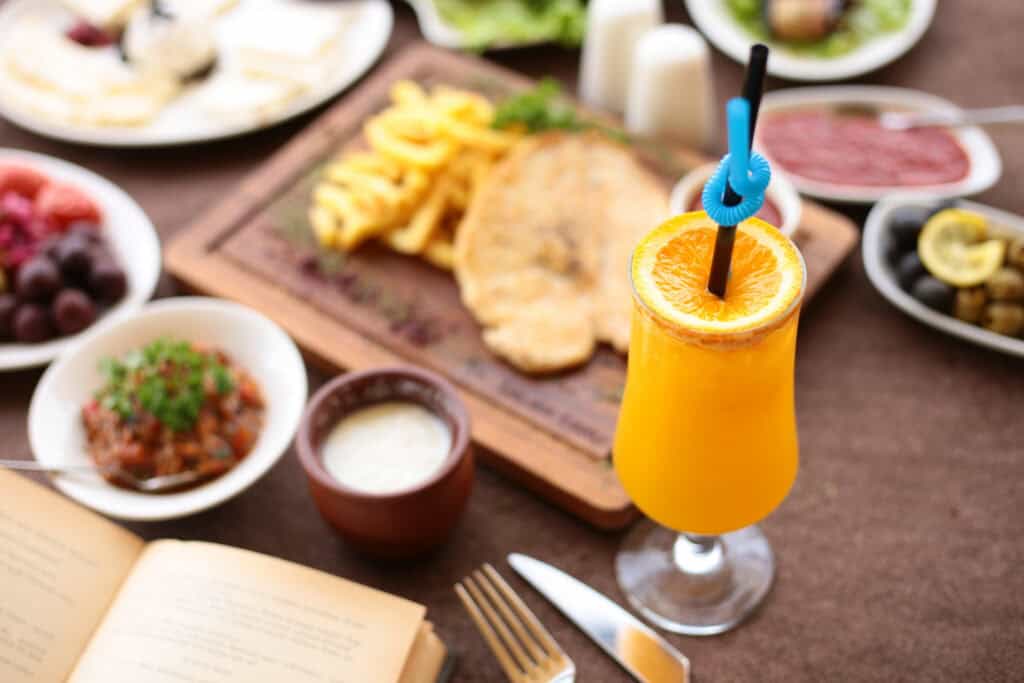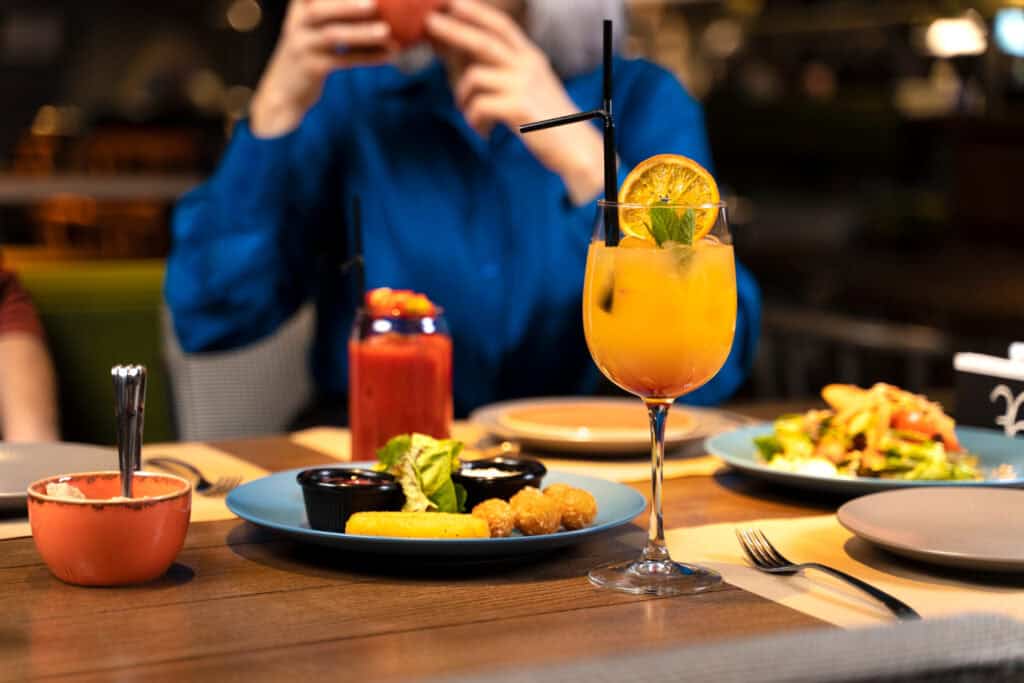
By Jermaine Thomas February 3, 2025
When organizing an event, the focus frequently centers on the location, decorations, and attendees. However, there is another vital aspect that warrants equal consideration—how food and drinks are matched. Establishing the ideal harmony between the food and the drink can transform any event from mundane to remarkable. Let’s investigate the craft and principles that create this culinary balance.
Why Food and Beverage Pairing Matters
Food and beverage pairing isn’t merely about serving wine with dinner or cocktails at a reception. It’s an intricate dance where flavors, textures, and aromas complement and enhance each other. This harmony can transform a meal into a memorable experience, impacting the overall success of an event. Whether it’s a wedding, corporate function, or a casual get-together, thoughtful pairing reflects care and sophistication, making guests feel pampered and appreciated.
Besides flavor, the appropriate pairings enhance the atmosphere of an occasion. A carefully curated menu can enhance the atmosphere, making the dining experience more engaging. The perfect mix of tastes can create harmony and thrill, igniting discussions among visitors and making a memorable impact.
The Basics of Food and Beverage Pairing
Mastering the fundamentals of food and beverage pairing can set the foundation for a delightful dining experience. Here are some essential principles to consider.
Flavor Profiles: The cornerstone of pairing is understanding the primary flavors—sweet, sour, salty, bitter, and umami. Balancing these profiles between food and drink can create a seamless experience. For instance, a rich, buttery dish like lobster pairs wonderfully with a crisp, acidic white wine, cutting through the richness and refreshing the palate.
Intensity Matching: Another principle involves matching the strength of the food with the drink. A subtle dish could be overshadowed by a strong drink, just as a hearty meal could overpower a gentle beverage. Consider how a robust steak calls for a rich red wine, whereas a subtle white fish may best complement a refreshing, crisp Sauvignon Blanc.
Complement or Contrast: Pairings can work through complementing flavors—like a sweet dessert wine with a sweet dessert—or contrasting ones, such as a sharp cheese with a sweet wine. The interplay of these elements keeps the palate engaged and curious.
Texture and Weight: In addition to flavor, the texture and weight of both food and beverage play an essential role. A creamy pasta might need an equally rich and velvety Chardonnay, while a crisp and effervescent sparkling wine can balance out fried foods, cleansing the palate between bites.

Popular Pairing Techniques
There are many approaches to pairing food and beverages, from traditional combinations to modern twists that challenge conventional wisdom. Here’s a look at some effective techniques.
Classic Wine and Food Pairings: We often hear about red wine with meat and white wine with fish, but there’s more nuance to explore. For example, Pinot Noir’s earthy notes pair beautifully with mushroom dishes, while a citrusy Chardonnay can enhance the flavors of poultry with lemon sauce.
Beer Pairings: Beer offers a vast range of flavors, from the bitterness of an IPA to the richness of a stout. A zesty wheat beer pairs well with light salads, while a dark porter can complement the deep flavors of chocolate desserts.
Cocktail Pairings: Craft cocktails introduce a creative aspect to pairing. A smoky mezcal margarita can pair well with grilled meats, while a gin and tonic infused with fresh herbs enhances a cucumber salad. Examining the elements of the cocktail—liquors, mixers, and garnishes—unlocks limitless pairing opportunities.
Non-Alcoholic Pairings: With more people opting for alcohol-free beverages, creative mocktail pairings are becoming a vital part of event planning. Freshly squeezed juices, herbal infusions, and sparkling teas can match the complexity of dishes just as well as alcoholic drinks.
Practical Tips for Event Planners
Planning an event with well-matched food and beverages requires foresight and flexibility. Keep these practical considerations in mind to create an outstanding experience for guests.
Know Your Audience: Understanding guests’ preferences helps tailor the menu. Are they adventurous eaters, or do they prefer classic comfort foods? Are they wine enthusiasts or craft beer lovers? This insight guides pairing choices that resonate with the crowd.
Seasonality Matters: Seasonal ingredients not only taste better but also inspire pairings that reflect the time of year. Think light, fruity wines and fresh salads in the summer, and robust reds with hearty stews in the winter.
Balance and Flexibility: It’s smart to provide a range of pairings to suit various preferences and dietary needs. This could involve offering a red and a white wine selection, several beer options, and a unique cocktail. Adaptability guarantees that all individuals feel valued and content.
Experiment with Pairings: Traditional pairings are great, but experimenting with unconventional combinations can elevate an event. Unexpected pairings like champagne with potato chips or bourbon with blue cheese create an element of surprise and delight guests.
The Role of the Caterer
Caterers play a crucial role in executing the vision for an event. Their expertise can elevate the dining experience through thoughtful pairings and menu curation.
A talented caterer doesn’t merely make food—they create memorable experiences. Their skill in pairing can elevate a meal, rendering the occasion memorable. Working with the catering team on pairings can enhance the menu, highlighting the harmony between food and beverages.
Caterers can also guide hosts in selecting pairings that suit the event’s theme and purpose. Whether it’s an elegant gala or a casual outdoor gathering, beverage harmony plays a crucial role in setting the tone.
Unique Pairing Ideas for Various Events
Different events call for different pairing styles. Here are some pairing ideas tailored for various types of gatherings.
Weddings: Consider serving a signature cocktail that reflects the couple’s personalities or the season. Pair it with passed hors d’oeuvres that mirror those flavors, like a lavender gin cocktail with smoked salmon canapés.
Corporate Events: In a professional environment, provide combinations that are elegant but still accessible. Consider fresh, bright wines paired with a seafood spread or artisanal beers alongside a gourmet burger station.
Casual Gatherings: For a laid-back vibe, consider fun, unexpected pairings. Maybe sparkling wine with fried chicken or a spiced rum cocktail with a spicy barbecue spread. These pairings add a playful twist and get guests talking.
The Cultural Element of Pairing
Cultural heritage and traditions often influence food and beverage pairings. Exploring these connections can add authenticity and depth to an event’s menu.
The pairing of food and beverages also draws from cultural customs and narratives. Combining an Italian wine with a pasta dish honors culinary traditions and takes guests to a different place and time, enriching the experience. Investigating global pairings—such as sake paired with sushi or tequila with Mexican dishes—can serve as an informative and engaging aspect of an occasion.

Trends in Pairing: What’s Hot Now
Like all aspects of the culinary world, pairing trends evolve over time. These emerging trends are shaping the way food and beverages are enjoyed together.
Low- and No-Alcohol Pairings: With the rise of mindful drinking, pairings that highlight non-alcoholic options are gaining traction. Think creative mocktails with gourmet bites that match their complexity.
Local and Sustainable Choices: Obtaining local drinks and foods not only bolsters the community but frequently improves flavor combinations. Locally sourced fruits and vegetables paired with regional beer or wine can enhance a more unified and significant experience.
Cross-Cultural Mashups: Fusion pairings are all the rage, mixing elements from different cuisines. A Thai curry paired with a Belgian wheat beer or a French rosé with Korean barbecue are intriguing and delightful to the palate.
Conclusion: Elevating the Event Experience
The skill of matching food and drinks transcends flavor—it’s about crafting experiences and memories. It’s a festival of tastes, an expedition across gastronomic terrains, and a present to the attendees. While organizing your upcoming event, think about the impact of this ideal combination. It might be the secret to transforming your event from merely good to genuinely memorable.
By understanding pairing principles, embracing creativity, and considering guest preferences, hosts can design an event where flavors harmonize effortlessly. The right combinations can turn an ordinary meal into an unforgettable experience that lingers long after the last sip is taken.